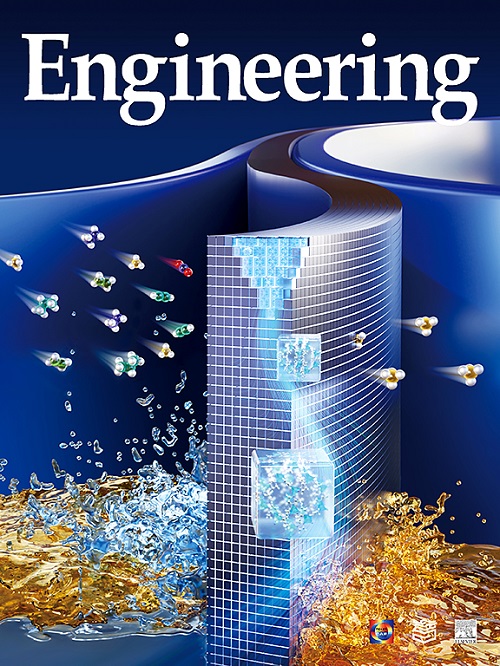β-sheet Engineering of IsPETase for PET Depolymerization
IF 10.1
1区 工程技术
Q1 ENGINEERING, MULTIDISCIPLINARY
引用次数: 0
Abstract
The enzymatic depolymerization of polyethylene terephthalate (PET) offers a sustainable approach for the recycling of PET waste. Great efforts have been devoted to engineering PET depolymerases on the substrate binding cleft and the surrounding loops/α-helices on the surface. Here, we report the systematic engineering of whole β-sheet regions in the core of IsPETase (a PETase from Ideonella sakaiensis) via a fluorescent high-throughput screening assay. Twenty-one beneficial substitutions were obtained and iteratively recombined. The best variant, DepoPETase β, with an increase in the melting temperatures (Tm) of 22.9 °C, exhibited superior depolymerization performance and enabled complete depolymerization of 100.5 g of untreated post-consumer PET (pc-PET; 0.26% Wenzyme/WPET enzyme loading) in liter-scale bioreactor at 50 °C within 4 d. Crystallization and molecular dynamics simulations revealed that the improved activity and thermostability of DepoPETase β were due to enhanced hydrogen bonds and salt bridges in the β-sheet region, a more tightly packed structure of the core sheets and the surrounding helix, and improved binding of PET to the active sites. This study not only demonstrates the importance of engineering strategy in the β-sheet region of PET hydrolases but also provides a potential PET depolymerase for large-scale PET recycling.

IsPETase用于PET解聚的β-片工程
聚对苯二甲酸乙二醇酯(PET)的酶解为 PET 废弃物的回收利用提供了一种可持续的方法。人们一直致力于在底物结合裂隙和表面环路/α-螺旋上设计 PET 解聚酶。在此,我们报告了通过荧光高通量筛选测定对 IsPETase(一种来自 Ideonella sakaiensis 的 PET 酶)核心的整个 β 片区进行系统工程改造的情况。研究人员获得了 21 个有益的置换并进行了迭代重组。最佳变体 DepoPETase β 的熔化温度(Tm)提高了 22.9 °C,表现出卓越的解聚性能,可在 50 °C 的升规模生物反应器中,在 4 d 内完全解聚 100.5 g 未处理的消费后 PET(pc-PET;0.26% 的辅酶/WPET 酶负载)。结晶和分子动力学模拟显示,DepoPETase β的活性和耐热性提高是由于β片区域的氢键和盐桥增强、核心片和周围螺旋的结构更紧密,以及PET与活性位点的结合改善。这项研究不仅证明了 PET水解酶β片区工程策略的重要性,还为大规模 PET 回收提供了一种潜在的 PET 解聚酶。
本文章由计算机程序翻译,如有差异,请以英文原文为准。
求助全文
约1分钟内获得全文
求助全文
来源期刊

Engineering
Environmental Science-Environmental Engineering
自引率
1.60%
发文量
335
审稿时长
35 days
期刊介绍:
Engineering, an international open-access journal initiated by the Chinese Academy of Engineering (CAE) in 2015, serves as a distinguished platform for disseminating cutting-edge advancements in engineering R&D, sharing major research outputs, and highlighting key achievements worldwide. The journal's objectives encompass reporting progress in engineering science, fostering discussions on hot topics, addressing areas of interest, challenges, and prospects in engineering development, while considering human and environmental well-being and ethics in engineering. It aims to inspire breakthroughs and innovations with profound economic and social significance, propelling them to advanced international standards and transforming them into a new productive force. Ultimately, this endeavor seeks to bring about positive changes globally, benefit humanity, and shape a new future.
 求助内容:
求助内容: 应助结果提醒方式:
应助结果提醒方式:


